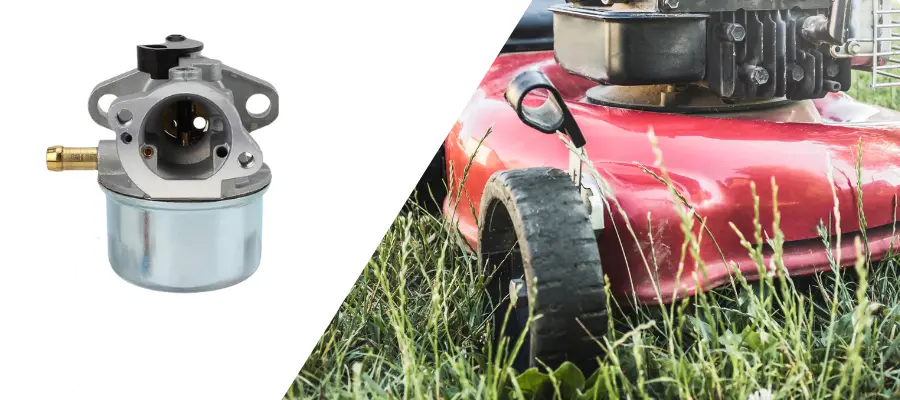Is your lawn mower not running smoothly? It might be time to clean the carburetor. A clean carburetor is crucial for your lawn mower to work its best, helping it run well and last longer.
In this article, we’ll show you everything you need to know about How to Clean the Carburetor on a Lawn Mower.
What are the signs of a dirty carburetor?
If your carburetor is dirty, your lawn mower might have trouble starting, running roughly, or even stalling. The engine might not perform as well as it should, and you might see black smoke from the exhaust. Sometimes, the engine might speed up and slow down unexpectedly. If you’re looking into fixing lawnmower sputtering issues, it’s important to note that a dirty carburetor is often the culprit.
If you notice any of these things happening, it’s a good idea to check and clean the carburetor to keep your lawn mower running smoothly.”
Safety Precautions
Before starting the cleaning process prioritize your safety by wearing gloves and eye protection throughout the cleaning process to shield yourself from potential fuel spills and chemical exposure.
Step-by-Step Guide to Cleaning the Carburetor
Removing the Fuel Tank
Slide the Tank Up: Some lawn mower models have tabs holding the fuel tank. Slide it up carefully to avoid breaking it.
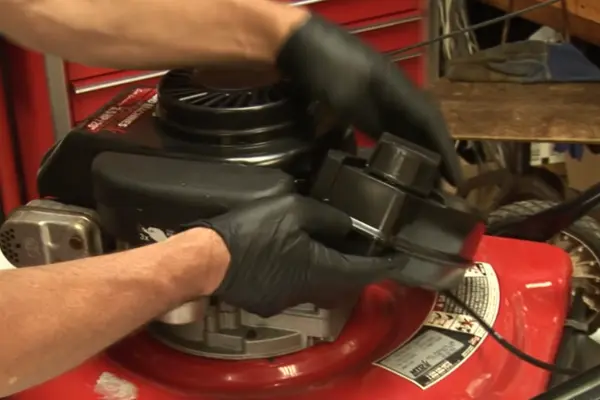
Remove the Clamp: Use pliers to take off the clamp holding the fuel line. If it breaks, use needle nose pliers to pry it off gently.
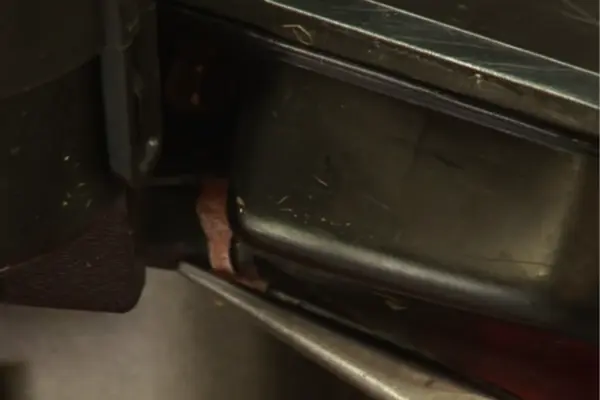
Disconnect the Fuel Line: With needle nose pliers, gently lift the fuel line. Avoid squeezing it to prevent damage.
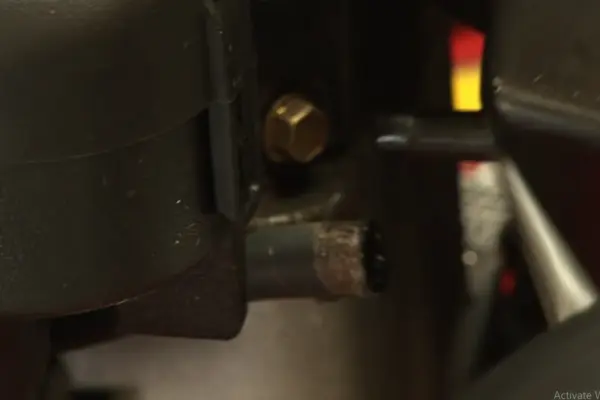
Cleaning the Exterior
Wipe Down the Carburetor: Use a rag with a bit of carburetor cleaner to wipe the outside. This stops dirt from getting into the carburetor when you take it apart.
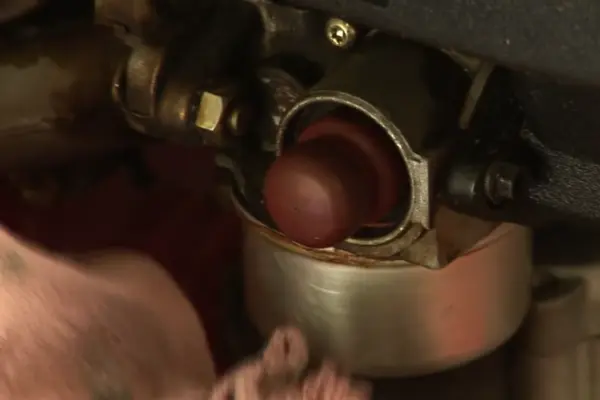
Lay Down a Rag: Put a rag under the carburetor to catch any fuel spills and keep your workspace clean.
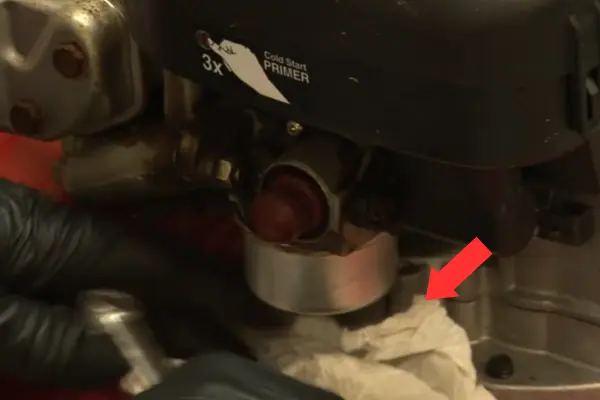
Removing and Cleaning the Bowl
Unscrew the Main Jet: Use a wrench to loosen the nut holding the bowl, which is also the main jet. Then, unscrew it by hand.
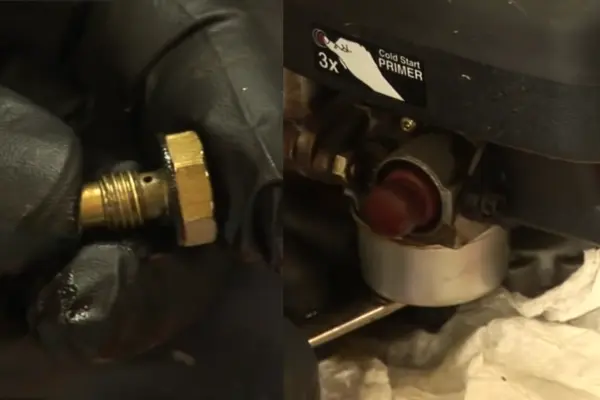
Inspect the Bowl: Check for old fuel, dirt, or debris. If the gas is yellow and smells stale, it’s old and degraded.
Cleaning the Main Jet
Clear Debris: Use a small wire to poke through the jet’s holes and clear any debris. This is important because blockages can affect engine performance.
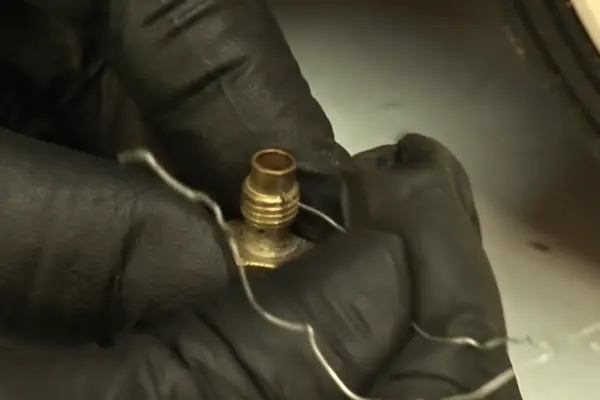
Use Carburetor Cleaner: Spray carburetor cleaner through the jet to dissolve and remove any leftover deposits.
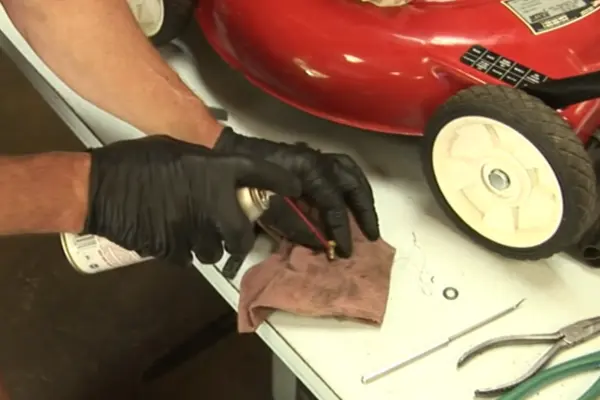
Ensure Ventilation: Work in a well-ventilated area to avoid breathing in harmful fumes.
Checking the Float
Inspect the Float: Gently lift the float to make sure it moves freely. Listen for a click, showing the needle is sealing well.

Replace if Necessary: If the float is damaged or stuck, replace it to ensure proper fuel flow
Reassembling the Carburetor
Install the New Bowl O-Ring: Put the new O-ring on the bowl, making sure it fits snugly.

Reattach the Bowl: Put the bowl back on the carburetor, lining up the shallow end with the hinge pin.
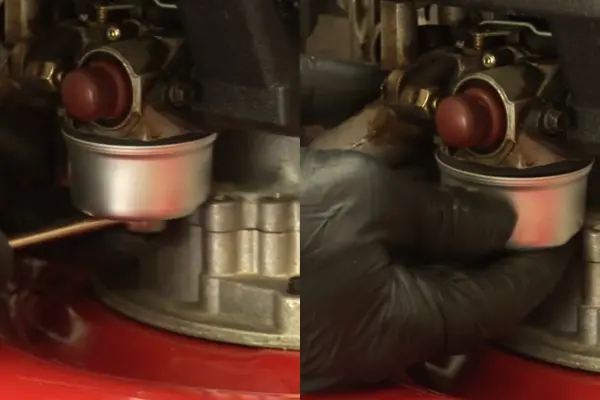
Tighten the Main Jet: Screw the main jet/nut back in place and tighten it securely.
Maintenance Tips
Maintenance
Regular maintenance can prevent many issues and prolong the life of your carburetor.
Frequency
Clean the carburetor at least once a year or more frequently if you use the lawn mower often.
Proper Storage
Store fuel in a clean, sealed container in a cool, dry place. Avoid using fuel that has been stored for more than 30 days without a stabilizer.
Using Fuel Stabilizers
Fuel stabilizers prevent fuel from degrading, which helps maintain a clean carburetor.
Common Troubleshooting Table
| Problem | Possible Cause | Solution |
|---|---|---|
| Hard starting | Dirty carburetor | Clean the carburetor |
| Rough idling | Blocked main jet | Clear the blockage with a small wire |
| Engine stalling | Float not moving freely | Check and replace the float if needed |
| Poor fuel economy | Stale gas or clogged jets | Use fresh fuel, clean the carburetor |
| Fuel leaks | Damaged gasket or O-ring | Replace gasket or O-ring |
Conclusion
Taking care of your lawn mower is important to make sure it works well and lasts a long time. Cleaning the carburetor is a big part of this.
If you follow the steps in this article, you can clean the carburetor well and fix common problems like hard starting or rough idling. Make sure you stay safe and handle fuel and chemicals carefully. If you make these maintenance tasks part of your routine, your lawn mower will run smoothly and your lawn will look great.
FAQS (How to Clean the Carburetor on a Lawn Mower)
Q:How can I tell if my carburetor needs cleaning?
If your lawn mower has trouble starting, idles roughly, uses more fuel than usual, or stalls while running, it might need cleaning.
Q:Can I clean my carburetor without taking it apart?
You can do some basic cleaning without removing it, but for a thorough job, you’ll need to take it apart to access all the parts and passages.
Q:What are the signs of a dirty carburetor?
If your lawn mower is hard to start, runs unevenly, stalls, or uses more fuel than normal, it could mean the carburetor is dirty or clogged.
Q:How often should I clean my lawn mower’s carburetor?
Ideally, give it a clean once a year or whenever you notice it’s not performing well. Regular maintenance helps prevent build-up and keeps your mower running smoothly.
Q:Can I use regular household cleaners to clean the carburetor?
No, it’s best to use a carburetor cleaner made specifically for this job. Household cleaners might not work well and could harm the carburetor parts.

